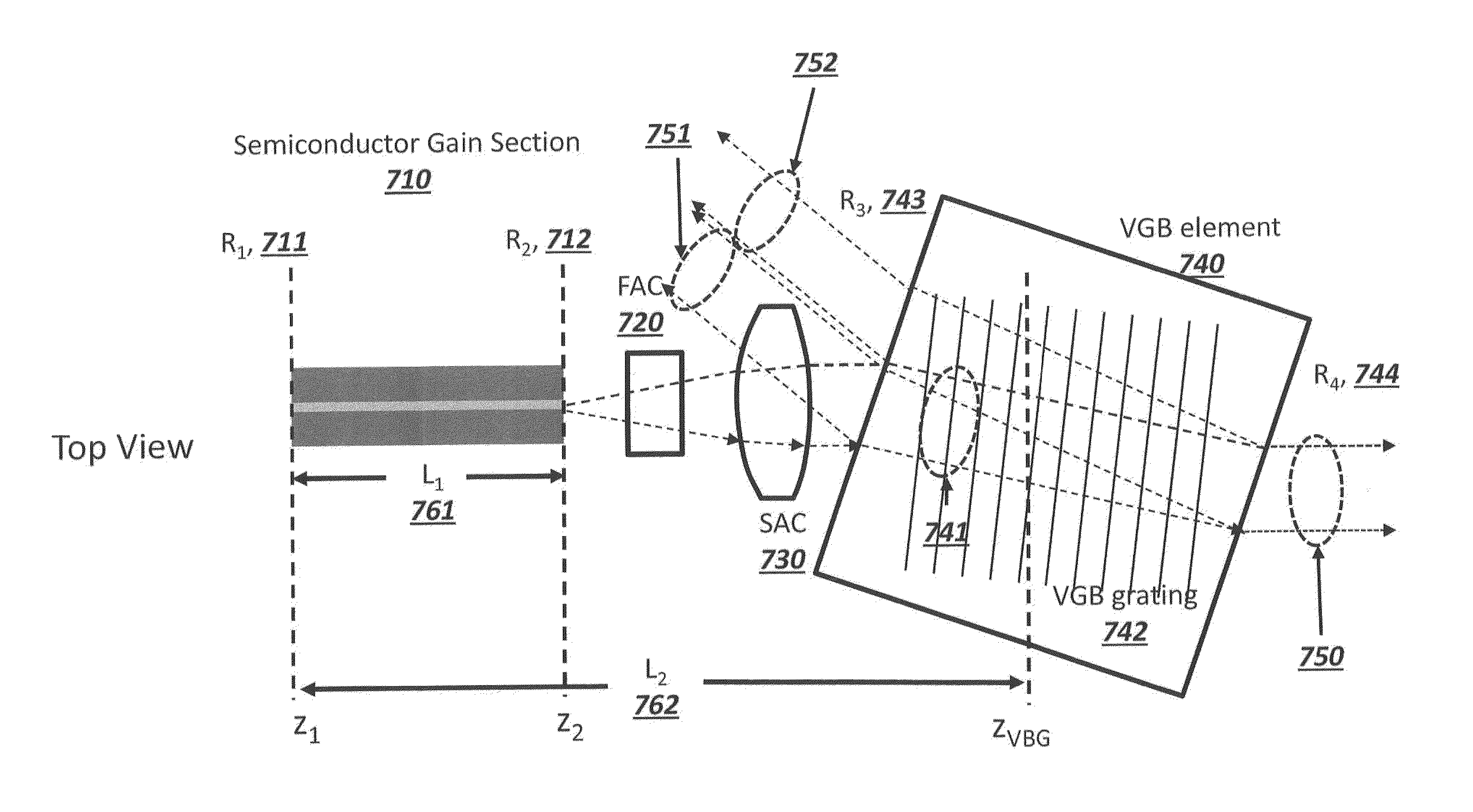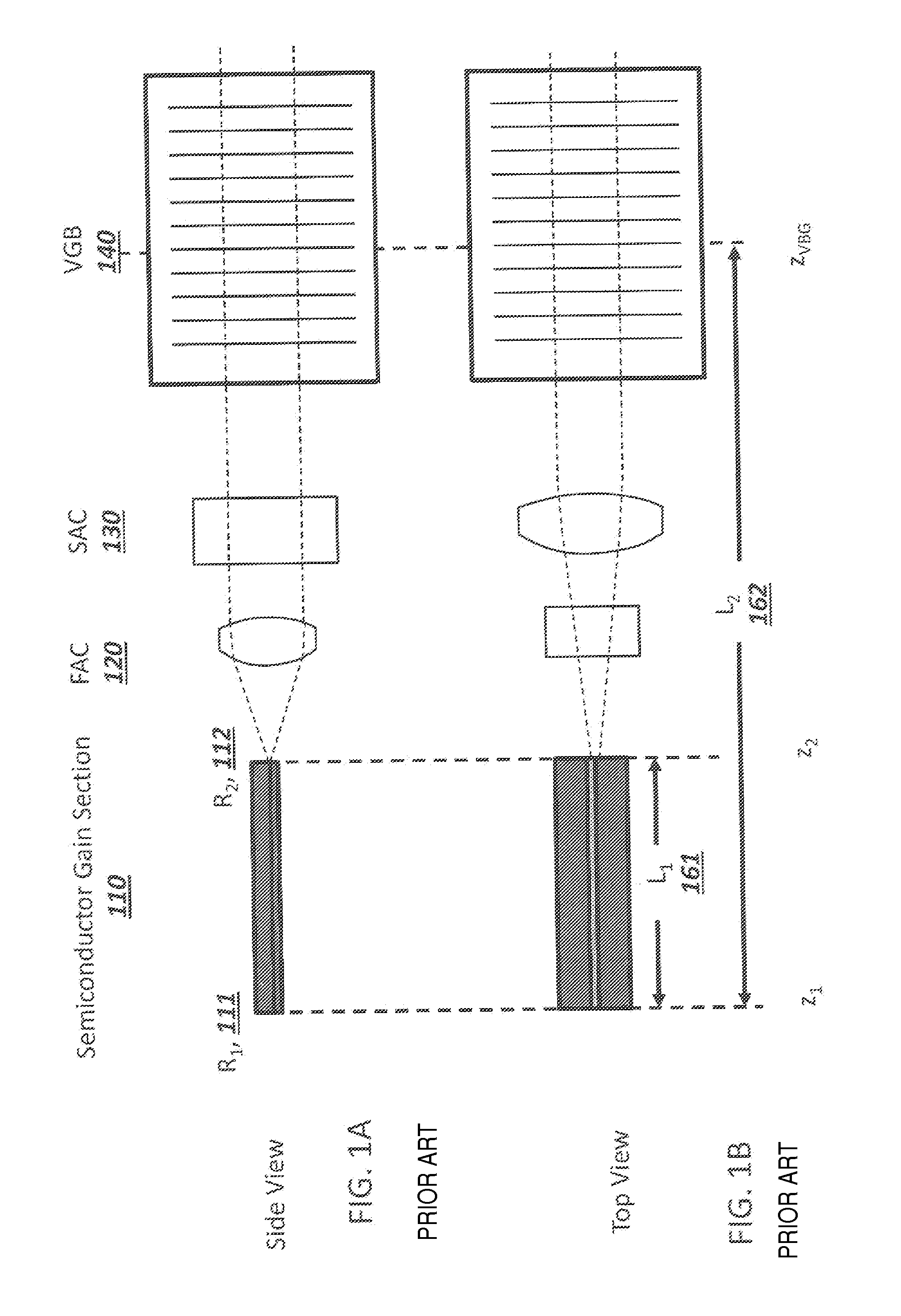Wavelength Stabilized Diode Laser
- Summary
- Abstract
- Description
- Claims
- Application Information
AI Technical Summary
Benefits of technology
Problems solved by technology
Method used
Image
Examples
Embodiment Construction
[0050]Stable single-longitudinal mode operation of a HECL Laser has been achieved by utilizing a semiconductor gain section in which lasing is prevented by choosing a combination of low front facet reflectivity and cavity length such that the semiconductor gain is insufficient to offset the loss of light through the low reflectivity front facet. That is, without feedback from the VBG, the semiconductor gain section operates in a non-lasing mode (i.e., superluminescent diode). In addition, the reflectivity of the VBG is chosen such that the HECL laser also will not lase in the absence of some feedback from the front facet of the semiconductor gain section. Thus, in order for the HECL to operate as a laser, the reflected emission from both the front facet and VBG must resonantly combine to reach lasing threshold. This leads to stable single longitudinal mode operation of the HECL embodied herein.
[0051]To achieve the necessary resonance of the reflected emissions, the resonant frequenc...
PUM
 Login to View More
Login to View More Abstract
Description
Claims
Application Information
 Login to View More
Login to View More - R&D
- Intellectual Property
- Life Sciences
- Materials
- Tech Scout
- Unparalleled Data Quality
- Higher Quality Content
- 60% Fewer Hallucinations
Browse by: Latest US Patents, China's latest patents, Technical Efficacy Thesaurus, Application Domain, Technology Topic, Popular Technical Reports.
© 2025 PatSnap. All rights reserved.Legal|Privacy policy|Modern Slavery Act Transparency Statement|Sitemap|About US| Contact US: help@patsnap.com



